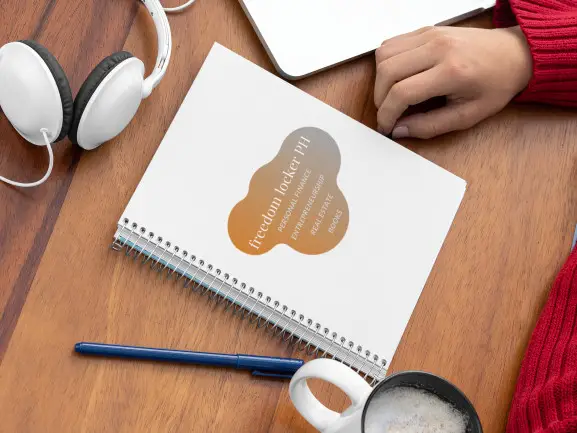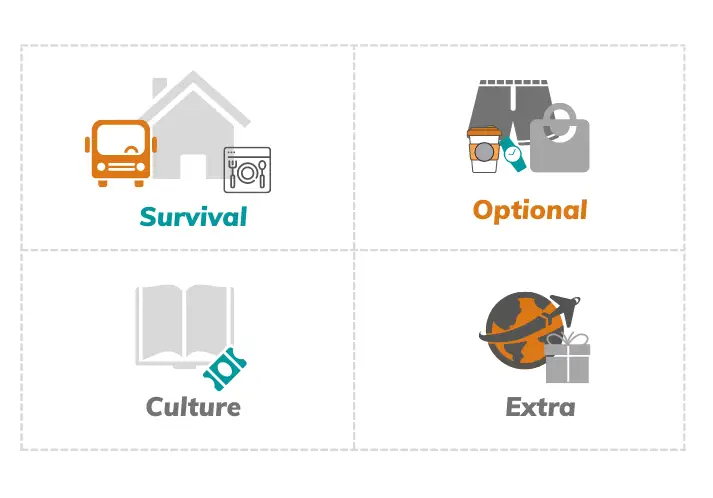Yes, being wasteful and reckless with money will hold you back from financial freedom. Unfortunately, being frugal alone will not (yes, NOT) lead to financial freedom. Having a job and being frugal (through Kakeibo or not) is a recipe for security, and maybe freedom from financial burden, but not freedom in our sense of the word (freedom of time and money – What is you WHY).

(See why your monthly savings will NOT lead to financial freedom.)
That said, learning to control your finances is one of those “necessary but not sufficient” facets of financial freedom. You’ll need to start somewhere and controlling your budget and finances is a necessary foundation! Managing your household budget creates a discipline you can then apply to business and real estate.
Some find managing money easy, while others struggle with it. This is for our struggling friends. I’ve found the Kakeibo Japanese Budgeting System* to be a useful tool for those having a hard time with this necessary first step. It’s one of the tools, but certainly not the only one.
Page Contents
Mindset before system
Let me be clear, no system will force the change in you. It’s a decision you’ll have to make. If you’re struggling with making that decision, a good tip is to ask yourself why you want to change. Really dig down to the root cause by constantly asking ‘but why?’. For example, when you say ‘I want to save so I can provide for my family,’ ask yourself ‘but why do I want to provide for my family?’. And don’t be afraid to ask the hard questions. You’ll find your answers will teach you a lot about yourself, and maybe find a motivating reason to change.
When you do decide to change, these systems and controls (Kakeibo included) make the process of managing your money much easier.
The Kakeibo method was also meant to be done on a ledger with an actual pen and paper. Reflection is a big part of Kakeibo, and pen and paper are believed to be better channels for careful thought. But I’m also of the belief that consistency is an even more essential part of the question. I think it’s best you make use of the tool that allows you to do this consistently. Whether that’s with pen and paper or a spreadsheet and app is your call.
What is Kakeibo?

Not surprisingly, Kakeibo is a Japanese word. Its direct translation is “household account book” (Google Translate). For those unfamiliar, an account book is also known as a ledger and is essentially a collection of your transactions per account. Kakeibo makes tracking easy because you’re able to see the big picture. (I recommend a Kakeibo spreadsheet because it automatically calculates this, but again stick to whatever gives you consistency.)
Its success also lies in its simplicity. There are no complex formulas nor complicated economics — it is the simple tracking of cash-in and cash-out events. It really is a framework to practice on and eventually apply to your business and real estate — when you’re ready for the next steps of your financial freedom journey. (9 Steps to financial freedom.)
4 Pillars

The Kakeibo system divides discretionary expenses into four (4) pillars. These are the Survival (food, rent, transportation), Optional (restaurant, shopping), Culture (books, movies), and Extra (vacations, gifts).
You may have noticed a lot of your expenses fall into more than one pillar, and that’s okay. There’s actually true value in sitting down and reflecting on the right pillar! Are all transportation expenses Survival? Is your Netflix subscription Culture or Extra? Be honest with yourself and establish rules on how you define your pillars. Consistency is once again key.
Step 1: Compute spending money
The first action is to compute how much you’re allowed to spend per month. You begin by getting a hold of your (1) total income for the month, (2) fixed expenses, and (3) savings goal. Your allowed spending for the money is: Spending Money = Income – Fixed Expenses – Savings Goal

This is really saying “pay yourself first,” an expression first used in the book The Richest Man in Babylon and popularized in Rich Dad Poor Dad. By deducting a portion (i.e., your savings goal) before spending on pillars, you’re effectively paying yourself, and securing a portion of your income.
Step 2: Come up with your weekly budget
The next move is to compute your weekly budget. For a 31-day month, this is approximately 4.4 weeks. For a 28-day month, this is exactly 4 weeks. Your weekly budget is then what’s allowed on Survival, Optional, Culture, and Extra expenses.

Your weekly budget also resets every week. Money unspent from your weekly budget is added as your savings.

Step 3: Track expenses consistently
This step is probably the hardest as it will require effort and consistency. It’s time to track your expenses! If you’re using a spreadsheet on Google Sheets, you can download the Google Sheets app on your smartphone and make updates on the fly.
It’s good practice to track the following per expense: (1) Expense Item, (2) Description, (3) Pillar, (4) Planned Amount, and (5) Actual Amount. If it’s an unplanned expense, you still record that with a planned amount of zero. Recording both planned and actual amounts is important. At the end of the month, do a comparison of your planned vs. actual as well as which pillars you went over-budget with.
Our tool at The Locker automatically computes all of these. It is on the Google Sheets platform and can be accessed on your smartphone with their app. Then again, I can’t emphasize this enough, use the tool that works for you.
You can also get this template at Fiverr. (If you don’t have a Fiverr account, you can create one here.)
Save 35% more?
It’s been said that the Japanese are able to save as much as 35% when using this method and is often praised as the Japanese secret to financial well-being.
I’ve found no studies that verify this (just loads of Internet posts claiming so), but it’s a method I’d consider, regardless. The major benefits of this approach, at least for me, are that it forces you to save first, is bounded by a mindset and reflection approach, and gives you quick feedback on which (and when!) expenses contribute the most.
Household budgeting — It ultimately doesn’t matter ‘how’ you do it. What matters is ‘that’ you do. Apply an approach that has Kakeibo’s simplicity and you’re on your way to saving more.
Read more, select a topic:









